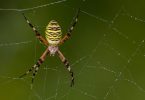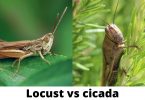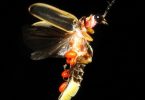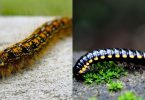Bees are insects just like ants, and wasps, the only difference is that unlike the ants, bees have wings with which they fly, and they also have hives. Anthophila, which is the scientific name of the bee, belongs to the order Hymenoptera, and is of the class called the Insecta. More so, the bee belongs to the Animalia kingdom, and the phylum is Arthropoda.
The lifespan of the Western honey bee is between fourteen days to twenty eight days. However, the early bumblebee lasts for about twenty eight days. There is so much to know about the bee, from its habitat, to its system of productivity, to its types and to its system of production, as well as its gender.
However, our focus in this article is on how to keep the bees away. This is important because sometimes we get to see bees in places we do not expect them to be, and they could ruin things for us there.
How to keep Bees away
Already we have agreed that there are places we do not want to see bees, either because of it’s buzzing sound, or it’s ability to sting and how bad it could hurt, or perhaps the superstition that surrounds the appearance of bees and it’s colony. Whatever the case is, there is a unanimous agreement that the presence of bees is usually very unpleasant.
So in this section, we will be sharing how to keep Bees away with you.
Whether the bee is in your backyard, or your pool, or anywhere at all, there are different remedies through which bees could be kept away for good. For clarity, these remedies will be split in two, and they are as follows:
- Natural remedies
- Artificial remedies
1. Natural remedies
Just like the name implies, natural remedies are the means of keeping bees away which do not involve the use of artificial products.
Some of the natural remedies includes the following:
- Do away with flowery fragrances or avoid nectar producing flowers
- Avoid leaving foods and drinks open
- Do not always use bright colours
- Keep your hair covered
- Find bee hives and destroy them
- Use Garlic powder
- Use Cinnamon
- Introduce the cultivation of Marigold
1. Avoid nectar producing flowers or do away with flowery fragrances
Nectar is a very sweet substance or juice produced by flowers, and because nectar or the flower produced juice is sweet, and bees that produce honey are attracted to sweet things, it is therefore no news that these bees are attracted to sugary substances, and floral scents, or juice, or perfumes.
If you are in an area where bees dwell or have infested, you should check if there are flowers there and what kind of flowers those could be. You could uproot them, or lure them out with a stronger scented nursery bed flower.
More so, an artificial remedy could work here too, but that will be discussed in one of the succeeding sections or paragraphs.
2. Avoid leaving foods and drinks open
You know that bees are attracted to scents, and as a sweet tooth insect, and a honey producing insect, bees are also attracted to sugary substances.
If you find yourself in an area prone to bee hives, or in an area already infested by bees, then you have to take cover with yourself and your food, so that you do away with the bees. Taking cover here means that you need to cover your food, or your plates of food, and your glasses.
Do not for any reason leave your foods, drinks, and beverages in general open, because this increases the probability of inviting stinging bees, and when they come and find you there with the foods and drinks or beverages, you already know that they will sting you ten folds without any hesitation.
It is important that you know that soda, or carbonated drink cans, are particularly notorious for inhibiting or harboring those stealthy insects or rather invaders. So it is very safe to always empty beverages into a container or a cup that has a lid or cover, and use plastics that have lids, or containers that have lids to hold, or store, or keep food, whatever it is that you choose to do with the food should include having it covered.
However, it is important to know that containers like flasks, or cups are better than aluminum foils and plastics. So you may also want to stick with just containers and cups.
3. Do not always use bright colours
Whether it is a real life bee, or an animated bee just like in cartoons and animations, bees have an amazing colour themselves and are attracted by colours especially because they have the ability to easily identify colours, even faster than humans.
So if you happen to be going to a bee infested area, whether it be a pool, or a classroom, or a restaurant, wherever at all that you notice the presence of bees, kindly avoid colorful swimsuits, clothes, handkerchiefs, accessories, bags, and towels; so that the bees will not consider you to be palatable for a meal. This does not mean that bees feed on the flesh of humans, it only means that bees are given colours, and colourful attire or apparel could really confuse them and attract them because what seems like a bright colour to humans, could also look like an appetizing flower to them.
4. Keep your hair covered
Bees find hairs attractive naturally, so more often than not, bees have an increased sense of awareness when they find hairs and fur around them. Actually this is because bees consider things that are hairy as characters or features of those or things that steal or hijack the bee’s honey.
In the same vein, do not take any of your hairy pets to any bee infested area at all. Whether it’s your car, or your dog; this is because human beings can cover their hair with a hat or a cap, or anything at all to blend and hide their hair, but these animals or pets, lack the adaptability. Except you decide to probably cover them in clothes.
5. Find Bee Hives and Destroy them
Bees rarely fly around alone, they usually fly in swarms or colonies (they fly in groups). To deal with Bees especially in areas they have infested in the past, always make sure to inspect different areas in the home or environments for bee hives, or nests, because if they consider that spot to be their home, they immediately mark their territory, and then become vehemently aggressive and it will be difficult to drive them away.
You may search and not find hives, not because there are no hives, but because you probably have been searching in the wrong places.
Here are some of the places you could find bee hives:
Under your decks, in your porches, around the building fences, under the roofs, on a tree.
Should you notice a nest in any of these areas, or other areas that you have searched which are not listed here, then you must be careful. Do not go trying take care of the situation, wear an overall to protect your body, and completely destroy the nest.
6. Use Garlic Powder
A lot has been said about the health benefits of the spices garlic. However we are being introduced to another use of garlic powder.
Bees do not like the smell of the garlic spices, especially in their powdered form. To discourage these bees from infesting your pools, or farms, or even your house, grind some pieces of garlic into powder, then sprinkle the substance in the areas where you found the hives, or have seen the bees.
Endeavour to be very careful with the garlic powder especially while sprinkling it. Do not sprinkle directly on the bee, sprinkle around the area, because the substance is very harmful to bees and in aggression, they could harm you while trying to be freed from the substance.
7. Use Cinnamon
Cinnamon is also a spice that bees detest. The method involved in this is not different from those of the garlic powder. You just have to repeat the process daily.
8. Introduce the cultivation of Marigold
Marigolds mostly bloom during and throughout the season of summer. However, marigold has a very pungent odor which bees detest and will never want to have around them.
So, if in your pool area, office, home, or neighborhood, there happen to bees infestation there, the solution is simple. Just cultivate marigolds within the area and notice how the bees stay at bay. More so, Marigold plants could be put in flower beds, or around the pools as borders to drive bees away.
2. Artificial Remedies
The artificial rememdy like the name implies are remedies derived by man made substances. It is also important to note that substances like perfumes, colognes, and hair sprays could attract bees and flies in general when they are heavily sprayed.
Some of these artificial remedies include the following:
- Use of scents
- Dryer Sheets
- Modify Landscape
- Mothballs
- Inflatable swim rings in pools
- Change the water supply
- Use of vinegar
- Citronella candles
- Use of soap solution
- Employ services of bee removers
1. Use of scents
As established in the preceding section. One of ways of attracting flies and bees is by the use of strong scents or perfumes. This is also a fast way to their doom. Just introduce scents that are appealing to humans but are unpleasant to bees and notice how they repel bees.
Some of these repulsive scents include the following: Peppermint, thyme, spearmint, and eucalyptus. Also, bees have great dislike for lime, lemon, citronella oil, lavender oil, olive oil, and vegetable oil.
To implement this method, generously add essential oil as well as any of the herbs (processed ingredients) already mentioned above in spray bottles, then spray the solution around chairs, decks, poolside items like towels, floaties, chairs, pool noodles, or other places else you intend spending time with your family and your guests, especially if you have seen them around that a area before.
2. Dryer Sheets
Dryer Sheets can also be used to keep bees at bay from your patios, pool side, compound, and anywhere at all. They also leave the atmosphere with nice fragrances.
3. Modify Landscape
Modify the landscapes in your home environment. This does not really mean that you should uproot the flowers in your garden. This simply means you should plant flowers that can old scents of the substances in the preceding section, as well as plant lemongrass in such a way that it’s display will powerfully repel bees.
4. Mothballs
These are usually chemical pesticide and deodorant, that come in small balls, and are sometimes during the storing of clothing and other articles that could be damaged by insects. Add some of these around the pools and in the other areas, including plants and notice how bees repel.
5. Inflatable swim rings in pool
Just like human beings, bees see pools as refreshing to the body especially during summer when the sun is at its hottest. More so, bees hydrate young ones in pools as well as use pools to maintain temperatures in the nest or hive.
To avoid bees swimming in your pool, reduce the use of chemicals while treating your pool. It is true that treatments are quite expensive, but they will useless if they only invite bees to the pool.
6. Change the water supply
Bees are very important to the ecosystem because of the balance they bring to the environment. So if you have bees in a pool or water you don’t want them in, you may have to change the water supply and redirect their roots.
To achieve this, you can look for another pool or water and gradually lure them to that pool using bright colours and scents that bees like. Then on pool you don’t want them, introduce the repellents discussed above.
7. Use of Vinegar
A distilled vinegar can be used to drive bees out of your home or environment completely. Fill containers with white coloured distilled vinegar, leave them open and notice how bees go away.
Also wipe areas where bees have been driven from with vinegar; distilled vinegar.
8. Citronella Candles
The fragrances that come from citronella candles can repel bees as it clothes the fragrances they are attracted to and leaves off scents that they find offensive.
9. Use of the soap solution
The soap solution is an organic method that can be used to keep bees away. This is very simple to do. Just fill up a spray bottle with a solution of water and mild soap, carefully shake the bottle of solution to mix it properly, then you can spray it on the bee nest or other areas you might have seen them. Do this at night.
10. Employ the services of bee removers
In case you have tried a few remedies, and the bees keep coming back, or you found a colony you do not think you can handle in your home, kindly hire the services of bee removers as soon as possible.
Amazing Facts about Bees and Honey
While we learn how to keep bees away, there are amazing facts about bees and about honey that we must not over look.
It is important to note the following:
- That all workers in the swarm of bees are females or are of the feminine gender.
- That a single bee can produce only a teaspoon of honey which is about five (5) grams in or during her entire lifetime.
- That bees fly about three times in air miles around the world just to produce one kilogram of honey.
- That the flavour of honey produced by a bee is mostly dependent on the nectar bees get from flower, or on the kind of flower bee gets it’s nectar.
- That male bees or drones have very big eyes with which they utilize when they are in search of the female bee or Queen Bee.
- That during reproduction or heat, the male and the female bees mate high up in the sky. After mating, the male bee loses its organs and dies off almost immediately.
- That a female bee or rather the queen be can produce an average of two thousand (2,000) eggs in one day. Fertilised eggs become females and unfertilised eggs become males, with the help of pheromones.
- That to attract more bees to your garden for any purpose at all, make your garden colourful.
- That bees have been discovered to love blue colour, and to love cluster plants.
- That bees really do not want to sting anybody because they are bound by nature to die after a sting.
- That round the continents and across the globe, there are about twenty thousand species of bee
- That bees are not found in Antarctica
- That there so many health benefits derived from the use of honey, whether it is eaten or applied to the skin. And that honey is best when it is darker.
- That bees are the only insects regarded as social insects and are partly domesticated by human beings.







